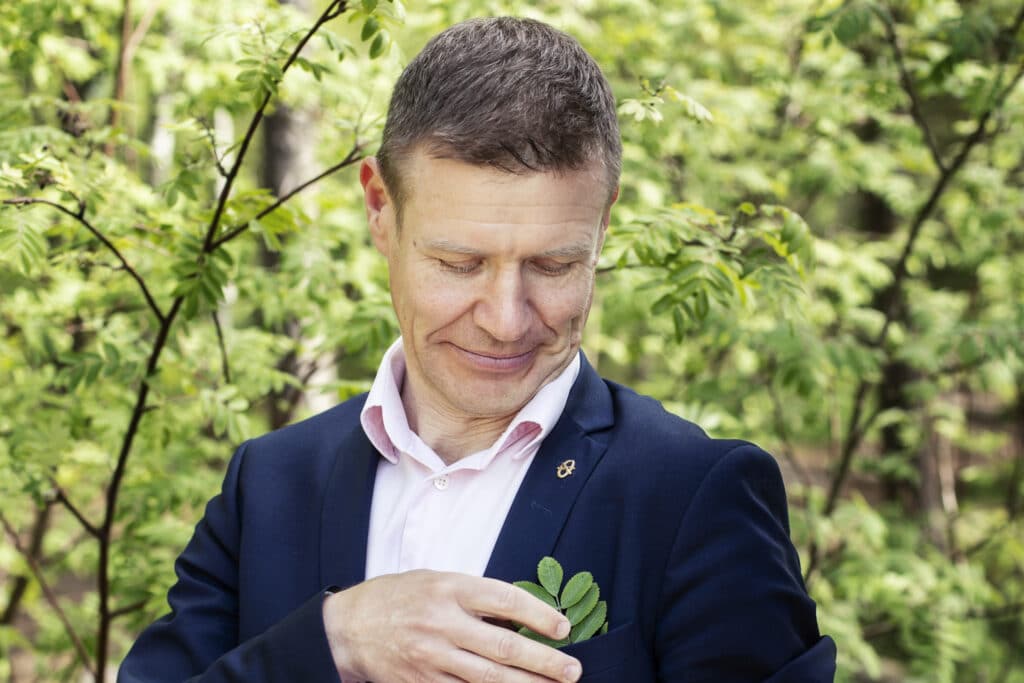Herkko Plit, CEO of P2X Solutions, says that the 20-megawatt Harjavalta plant will be used to produce hydrogen via electrolysis, which uses electricity to break up water molecules into their constituent elements.
“We will use wind energy for this process and possibly also solar power.”
The hydrogen will be sold for industrial use all over Finland, and it will also be used to make synthetic fuels at a synthetic methane production facility. The site will also host a hydrogen filling station for heavy-duty vehicles. The Finnish Information Centre for the Automobile Sector expects the number of vans and lorries running on hydrogen to begin rising sharply in the 2030s.
“Electrolysis also produces oxygen and heat, which will be used by companies in the large industrial park in Harjavalta.”
Construction work will begin in the autumn, and the plant is due to be completed in summer 2024. However, the company’s plans do not end in Harjavalta:
“We aim to build up to 1,000 megawatts of electrolysis capacity in Finland over the next ten years.”
Hydrogen has many advantages
In Plit’s opinion, hydrogen is at the centre of the green transition. Hydrogen is essential for us to have any chance of reaching our emission targets globally.
“When hydrogen burns, the only emission is clean water vapour. The Harjavalta plant alone will reduce Finland’s CO2 emissions by about 40,000 tonnes per year.”
One other key feature is that hydrogen allows electricity to be stored, either as hydrogen or by using it to produce synthetic fuels.
“Hydrogen can be used as a balancing power for renewable forms of energy. For example, if a lot of wind power is available at a low price, it makes sense to use this energy to make hydrogen. When electricity prices are high, the stocks of hydrogen or methane can be converted back into electricity.”

Hydrogen will also allow us to improve our energy self-sufficiency. Given the prevailing geopolitical situation, Western Europe has stepped up its efforts to free itself from dependence on Russian fossil fuels more quickly.
“Hydrogen can even be used to manufacture proteins – in other words, food,” Plit notes.
Will Finland become a pioneer in the hydrogen economy?
Plit says that Finland has a wealth of opportunities to develop a hydrogen economy.
“Compared with other European countries, Finland can offer highly competitive onshore wind power, and more wind power
is being built all the time. Our country also has lots of clean water, which is required for electrolysis, not to mention the strong technical expertise and know-how of Finnish professionals.”
The European Commission´s hydrogen strategy estimates that almost one-quarter of the world´s energy supply will already be produced using green hydrogen by 2050.
The European Commission’s hydrogen strategy estimates that almost one-quarter of the world’s energy supply will already be produced using green hydrogen by 2050, and annual sales will reach EUR 630 billion. According to a report by Goldman Sachs, a bank, demand for electricity will double over the same period, and electrolysis will become the largest consumer of electricity.
Plit thinks that the hydrogen economy could be the next Nokia for Finland. However, until functioning markets arise, the state will need to subsidise investments, and the infrastructure required cannot be built in a day.
“It took about 12 years for wind power to become commercially viable and 8 years for solar power. The time scale for hydrogen could, perhaps, be from four to six years.”
Neste is also working on hydrogen-related plans and there also other companies active in the Vantaa, Vaasa and Turku regions with such ideas.






